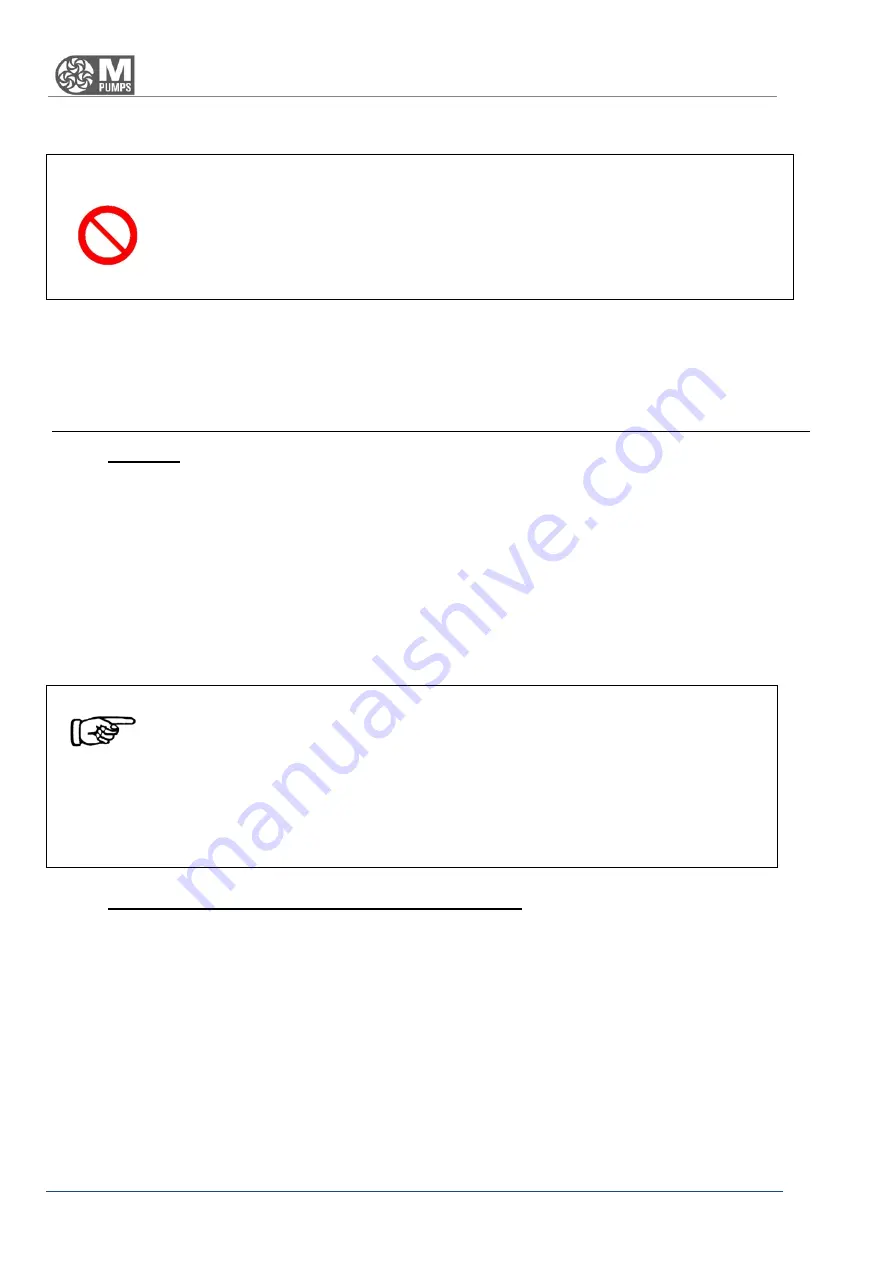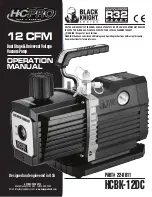
Pag. 12/33
ISM0210 Instruction Manual of series SCE - Rev.03
These operations must be performed by a trained staff who is informed of the risk of these proceedings.
PROHIBITION
−
It is forbidden to lift the pump using different lugs from the ones specially designed and
reported, as points of anchorage.
−
You cannot lift a pump and motor assembly using the eye-bolt of the electric motor
only.
−
During the lifting the entire surrounding area is considered as a danger zone and must
be cleared by personnel not engaged in those operations.
It is indicated the possibility of transporting and handling the pump using the lugs designed for that use: you
must ensure that chains and shackles are able to withstand the weight of the pump (as shown in "TECHNICAL
DATA").
ASSEMBLY, INSTALLATION, CONNECTIONS, COMMISSIONING AND SETTING
Assembly
Install the pump on a solid foundation as close as possible to the liquid to be pumped, below the level, in a
position to facilitate maintenance and inspection.
Ensure that the pump doesn’t take rough shacks as this may damage the magnets of the internal and external
rotor or the silicon carbide bearings.
Ensure that the heated air from other units does not affect the pump; the air temperature must not exceed
40 °C, for higher temperatures contact your distributor
M PUMPS PROCESS
; ensure also the free circulation of air
cooling of at least ¼ the engine diameter, because either the pump or the motor should be able to dissipate the
heat by natural air convection. Insufficient cooling could lead to high surface temperatures of the bearings seat,
poor lubrication and premature failure of bearings. Useful is the monitoring of the surface bearings’ temperature.
It is always responsibility of the operator to keep low the temperature of the liquid so that not to superheat the
pump: in case of irregular pressure fluctuations and flow drop turn off the pump.
CAUTION
−
Normally you should mount the pump horizontally. If mounted vertically or inclined,
the pump, or rather the suction flange shall be placed in the lowest point. Leave a
space of at least 50
cm between the pump and any walls or pipes.
−
When pumping liquid can reach high temperatures: form 60 °C upwards you must
install protections to prevent contact with hot pump parts;
−
Connect to the ground the entire pump casing to prevent accumulation of static
electricity;
−
If the pumped liquid can be dangerous to people and environment, the user must take
precautions for a simple and quick block in case of leakage for breakage/ replacement/
pump maintenance.
Connection of the pump to suction and discharge pipes
For a proper assembly aimed at an optimal use of the pump, you must follow these requirements:
−
pipes must be supported and kept in line regardless of the pump, until its connections, so that not to
impose on it;
−
links must not be subjected to stresses during the job
;
−
the maximum permissible forces and moments on flanges shall not exceed those listed in “technical
data”;
−
inlet pipes should be constructed with as few restrictions as possible in order to have the highest
available NPSH;
−
the length of pipes , particularly that of the inlet pipe must be minimized;
−
the pipe must be placed so that it is not possible the formation of air; if this is not possible, it should be
calculated the possibility of bleeding the air from the highest point ;
−
during suction use full section valves only;













































